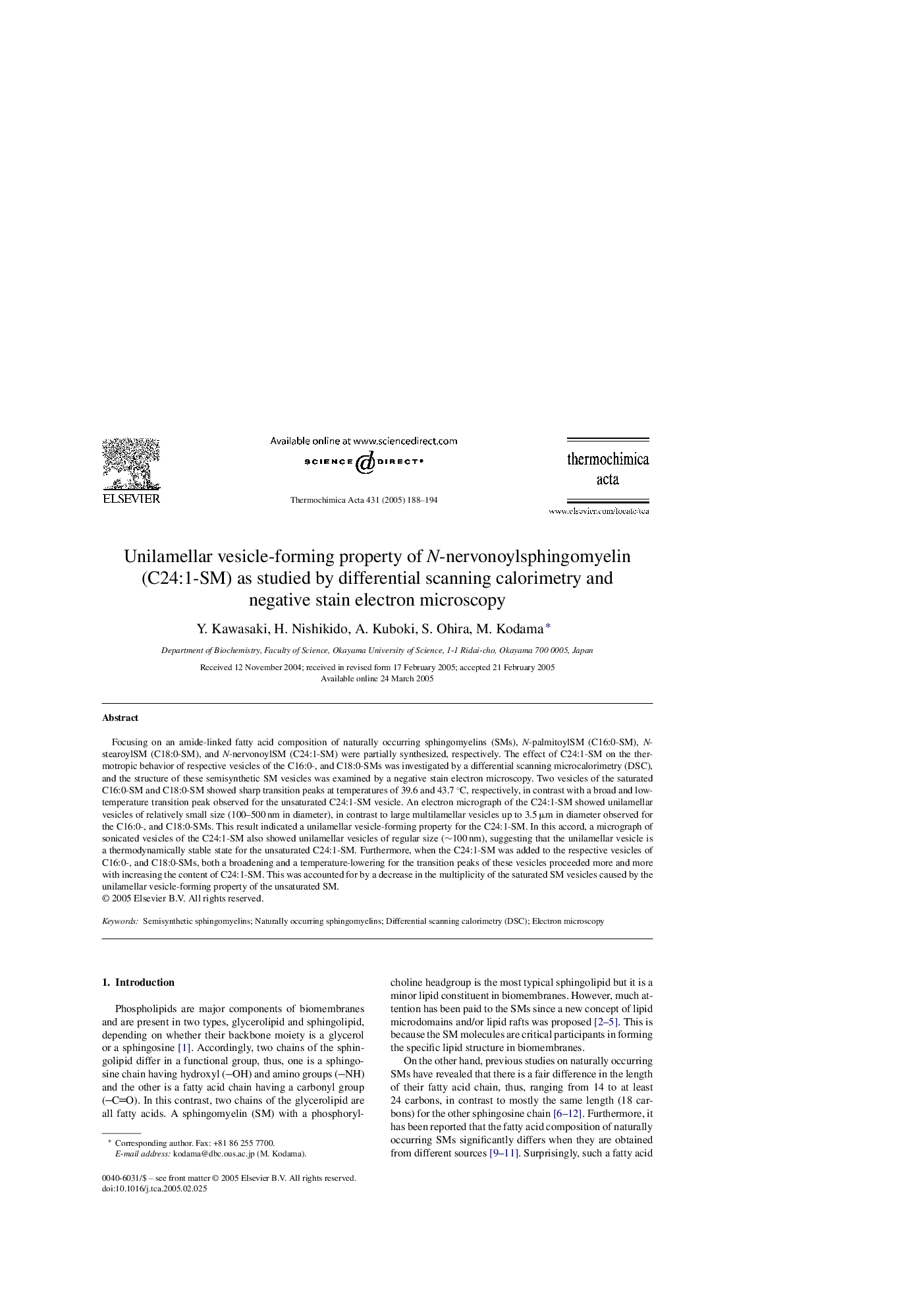| Article ID | Journal | Published Year | Pages | File Type |
|---|---|---|---|---|
| 9694113 | Thermochimica Acta | 2005 | 7 Pages |
Abstract
Focusing on an amide-linked fatty acid composition of naturally occurring sphingomyelins (SMs), N-palmitoylSM (C16:0-SM), N-stearoylSM (C18:0-SM), and N-nervonoylSM (C24:1-SM) were partially synthesized, respectively. The effect of C24:1-SM on the thermotropic behavior of respective vesicles of the C16:0-, and C18:0-SMs was investigated by a differential scanning microcalorimetry (DSC), and the structure of these semisynthetic SM vesicles was examined by a negative stain electron microscopy. Two vesicles of the saturated C16:0-SM and C18:0-SM showed sharp transition peaks at temperatures of 39.6 and 43.7 °C, respectively, in contrast with a broad and low-temperature transition peak observed for the unsaturated C24:1-SM vesicle. An electron micrograph of the C24:1-SM showed unilamellar vesicles of relatively small size (100-500 nm in diameter), in contrast to large multilamellar vesicles up to 3.5 μm in diameter observed for the C16:0-, and C18:0-SMs. This result indicated a unilamellar vesicle-forming property for the C24:1-SM. In this accord, a micrograph of sonicated vesicles of the C24:1-SM also showed unilamellar vesicles of regular size (â¼100 nm), suggesting that the unilamellar vesicle is a thermodynamically stable state for the unsaturated C24:1-SM. Furthermore, when the C24:1-SM was added to the respective vesicles of C16:0-, and C18:0-SMs, both a broadening and a temperature-lowering for the transition peaks of these vesicles proceeded more and more with increasing the content of C24:1-SM. This was accounted for by a decrease in the multiplicity of the saturated SM vesicles caused by the unilamellar vesicle-forming property of the unsaturated SM.
Related Topics
Physical Sciences and Engineering
Chemical Engineering
Fluid Flow and Transfer Processes
Authors
Y. Kawasaki, H. Nishikido, A. Kuboki, S. Ohira, M. Kodama,
